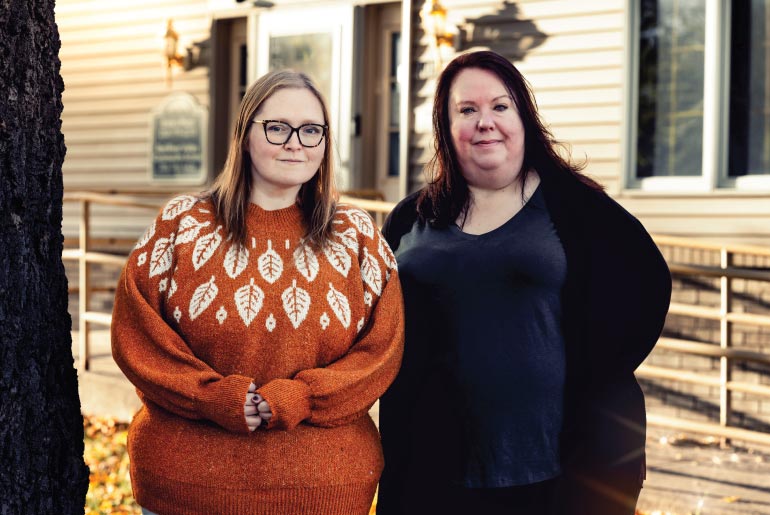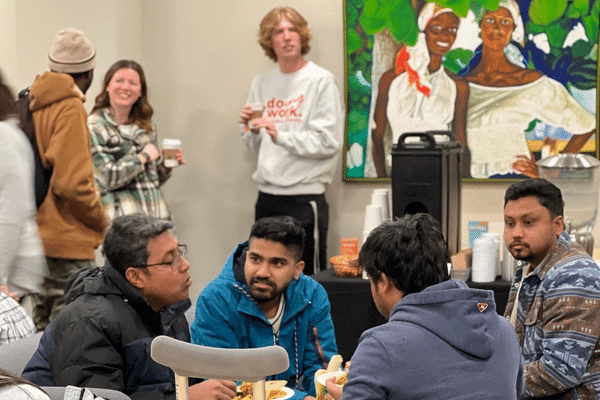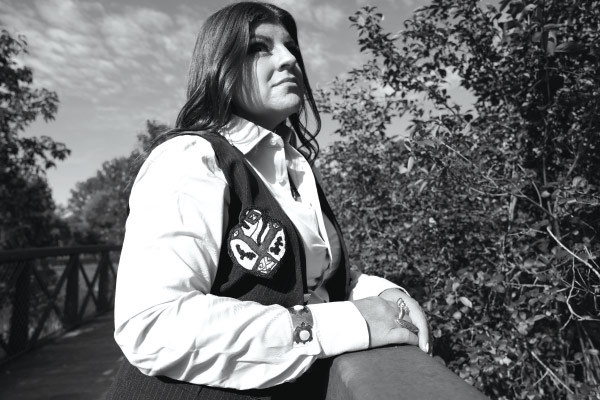From Class Project to Safe Haven
Ernie’s Place provides transitional housing for young adults exiting the foster care system.
Last fall, the North Dakota Homeless Management Information System reported that the number of people living in emergency shelters had more than quadrupled in the past year.
For youth aging out of the foster care system, impending homelessness is a scary reality.
UND graduate students Safari Berry, ’20, ’23, and Shelamar Henderson, ’19, addressed
this growing concern and developed Ernie’s Place as a class project.
Ernie’s Place, in north Grand Forks, provides transitional housing and support for
18- to 24-year-olds with prior involvement in the foster care system. On-site workshops
help residents learn life skills like cooking, financial literacy and gardening.
“These kids haven’t had that traditional, supportive family,” Safari said. “Being bounced around, in and out of foster care homes and centers, they haven’t had someone alongside them teaching them the skills we take for granted.”
For example, one resident learned the dangers of leaving bacon on the stove, which triggered a call to the fire department. Others have learned how to use a washing machine or prepare meals that don’t come from a microwave.
We created Ernie’s Place from the ground up. We had an empty building and an idea.Safari Berry, ’20, ’23,
No Barriers
Safari and Shelamar consulted local community members and their target population, built a strong referral network, and strategically sought funding so that they could serve both North Dakota and Minnesota youth. “We didn’t want the Red River to be a barrier,” Safari said.
Since opening in February, Ernie’s Place has operated at full capacity. Managed by a case manager with the support of an intern, five dorms are available for short-term residents, and two apartments house those needing longer stays, up to 24 months. Residents pay rent based on their income.
One recent resident stayed just over a month before moving into the dorms at UND. “He was over the moon when he got his acceptance letter,” Safari said. “He knew what he wanted to do; he knew how to do it. We were there to help and guide him.”
Other residents have been there since February. “We encourage them to think about what they want to do and to figure out their bigger goals. If obtaining a GED is a goal, we give them time to achieve that,” Safari said.
Safari and Shelamar are impressed by the residents’ resiliency. “They don’t give up — not a single one. They’re going to push through,” Shelamar said.
No Stigma
“We created Ernie’s Place from the ground up. We had an empty building and an idea,” Safari said.
The building, formerly the Ernie J. Norman Shelter, was donated by Norman, well-known in Grand Forks social work. “When we took over the building to reopen it as a youth transitional home, we wanted to honor the Norman family and all they have done for the community,” Safari said.
By shortening the name, Safari hoped to reduce the stigma around homelessness. “We wanted at-risk youth to be able to say, ‘I stayed at Ernie’s Place,’ without any awkwardness or judgment.”



